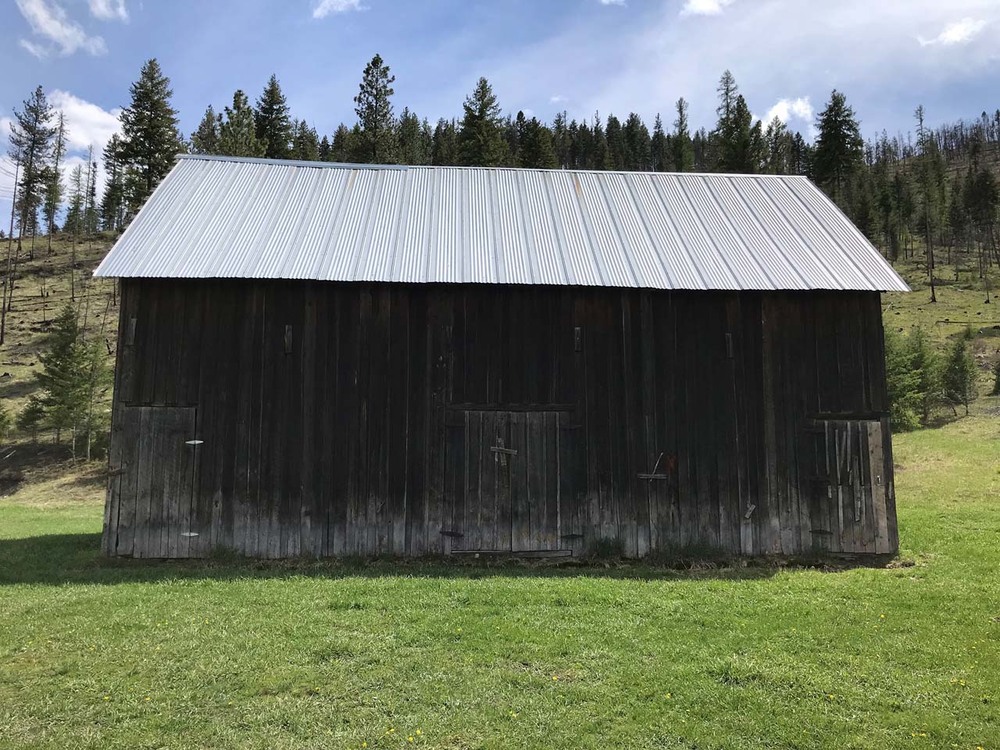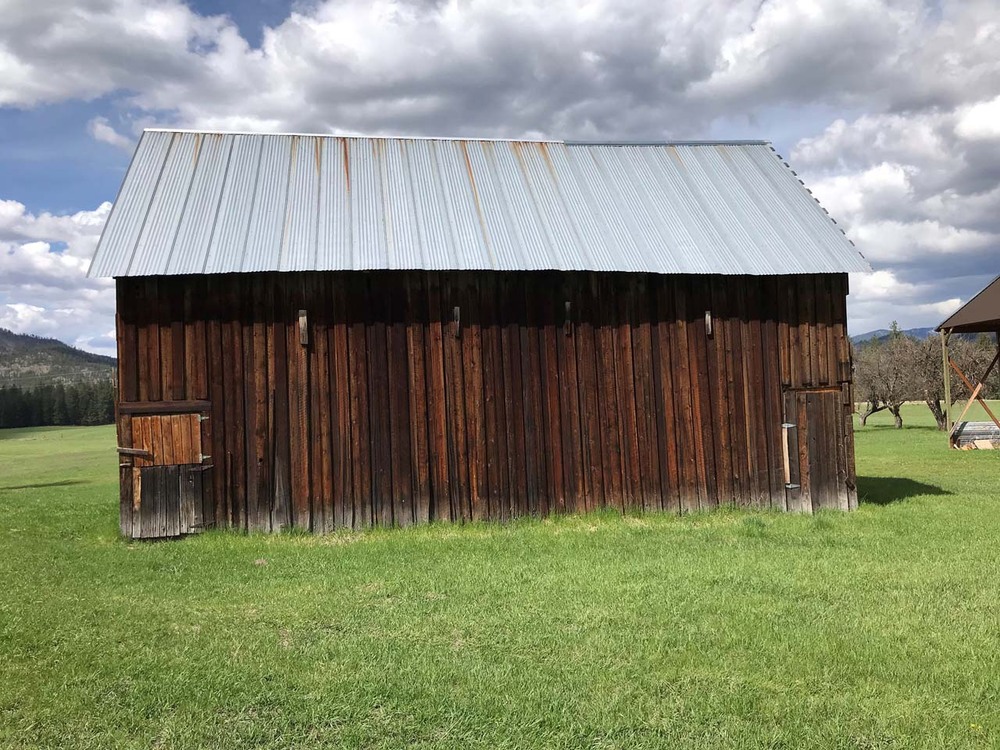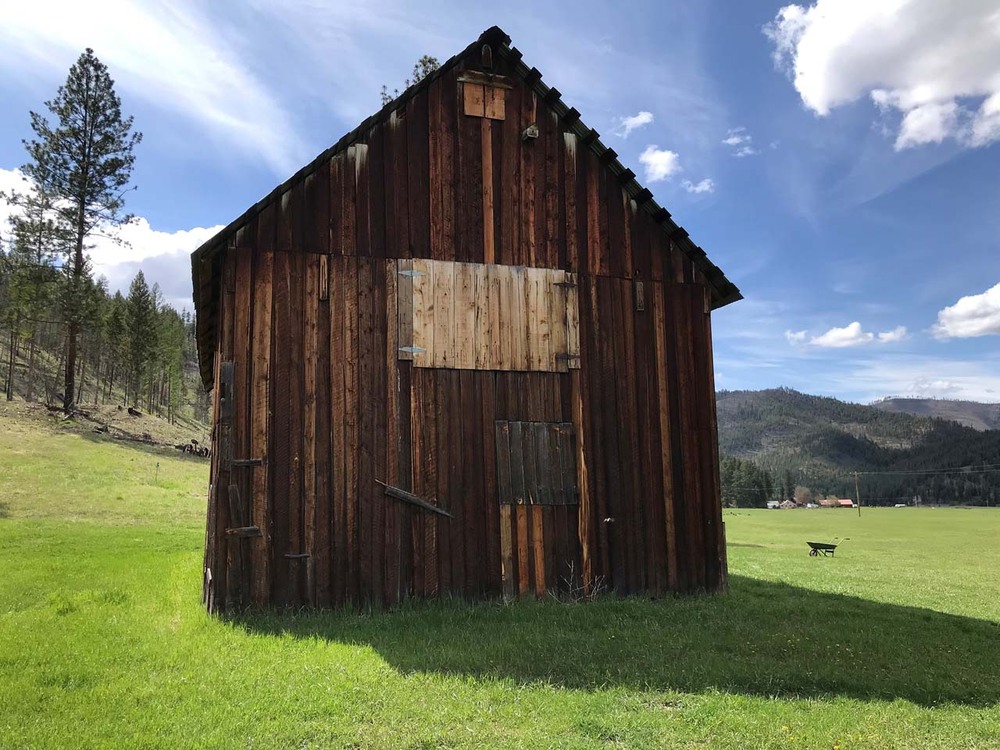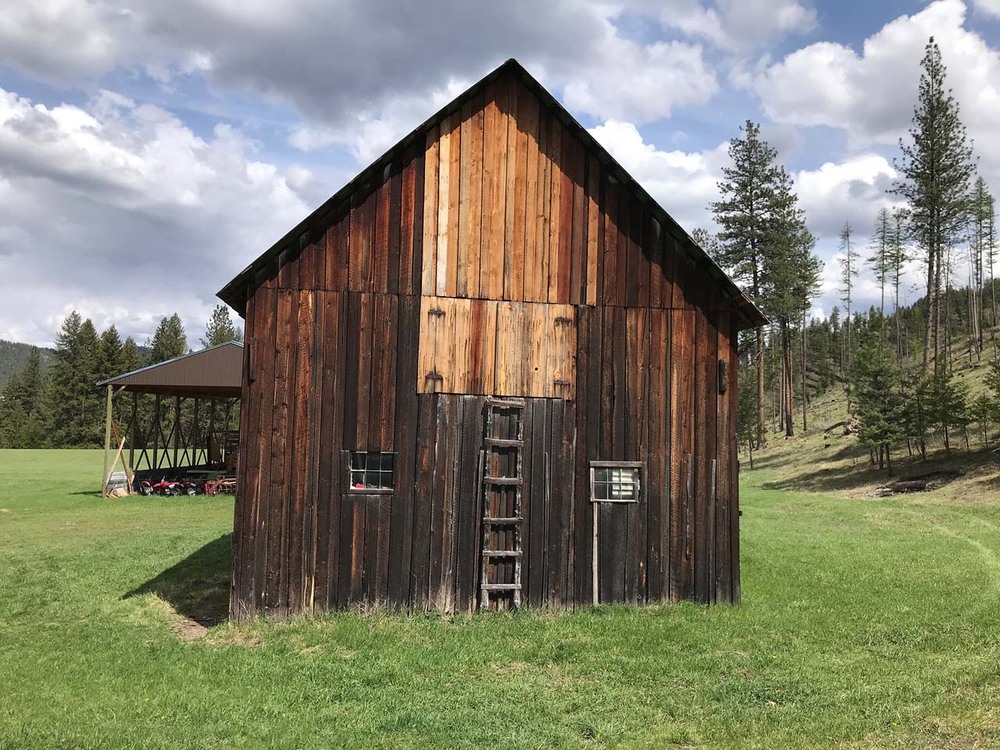
Two transcontinental railroads, the Northern Pacific and the Milwaukee Road, passed through this stretch of the Clark Fork Valley, making it ripe for agricultural development. The railroads touted “free land” offered by the Homestead Act to attract customers. Like others in the valley, August and Sadie Swanson turned to farming when mining in nearby Quartz played out. The farm started modestly, with a two-acre garden, fruit orchard, berry patch, and chickens. An expansion that included a haying operation, dairy cows, and draft horses necessitated construction of the barn. The barn’s rough-milled vertical board siding and hand-hewn log posts and roof trusses suggest it was built soon after the nearby farmhouse. Like many Montana families, the Swansons relied on outside work to earn a living. Sadie, and later Edna, raised children and used the farm’s bounty for food and extra income, while August and Clyde worked off the farm. Thus, the family prospered despite less than ideal soil conditions. The Swanson farm stands as one of the few examples of an enduring Mineral County homestead.
Images



